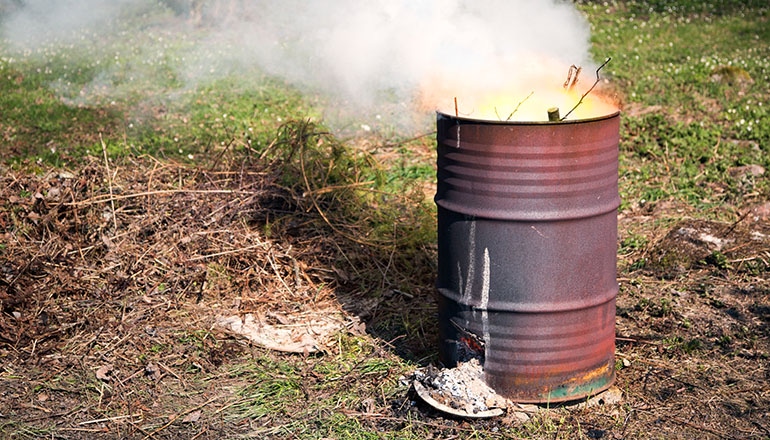Burn Crazy BURN

In 2002, I was reading a brochure written by my county fire department. I was amazed how it allowed for the burning of household trash. I researched all manners of how best to proceed. After working with my fire marshal in Shenandoah County for more than nine months in the hope to develop a brochure informing citizens what is best to do, he directed me to contact Virginia environmental regulators.
Back in 2004, I approached the Department of Environmental Quality (DEQ) and the Virginia Chapter of the Solid Waste Association of North America. I requested to make Virginians aware of the dangers of burning trash. For example, do not burn magazines or plastic in their wood stoves. I also requested the state develop regulations for backyard or barrel burning to include in the Virginia Solid Waste Management Regulations. Neither organization was interested in addressing this issue then. Below is what is allowed
If you live in an area that does not have a local burning ordinance and you do not have curbside pickup, you can burn leaves and some household trash.
Many states now in this country have banned this activity.

Plain black ink newspaper and uncoated papers, such as printer paper, are safe to burn. However, colored paper, wrapping paper, newspaper inserts and magazines are not safe to burn. These items contain metals that can give off toxic fumes when burned. Cardboard can release toxic chemicals when burned, especially if it has been printed with a logo, plastic tapes and other coatings. Any cardboard with wax or colored print should be kept out of the fire.
Plastics are also unsafe. Any type of household plastic, whether it’s bubble wrap or a plastic cup, should not be burned in a fireplace. Plastics release toxic chemicals, including hydrochloric acid, sulfur dioxide, dioxins and heavy metals, that are dangerous for your health and bad for the environment. These emissions are known to cause respiratory ailments and stress human immune systems, and they’re potentially carcinogenic.
Other items not to burn: tires, glues, treated lumber and driftwood (salt is an issue), rubber, paints, metals, electronics, painted woods, petroleum products and other forms of trash.
We all share the same air. It would be wise for the U.S. to establish a national and global public awareness campaign to lessen burning. With the greater population and the planet getting hotter, we must lessen air pollution. Toxic, uncontrolled incineration of waste threatens our health, economy and our greater wellbeing. Open burning of waste is a difficult thing to quantify, however, and we must motivate ourselves to prevent this from happening if we wish to breathe easier in the future


Comments